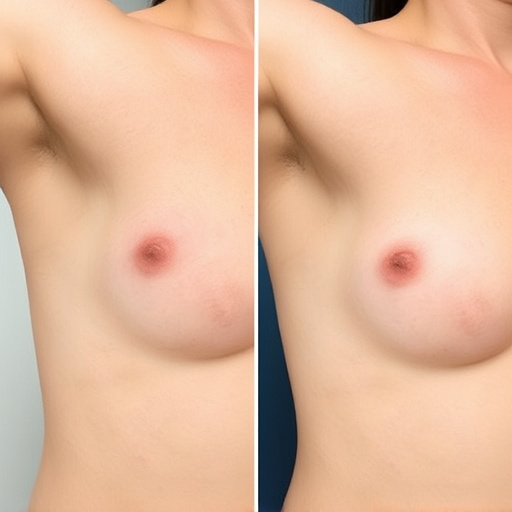This text analyzes the plastic intake tube pros and cons as a thermal insulation option, comparing them to alternatives like mineral wool and fiberglass. While plastic tubes are lightweight, cost-effective, and easy to install, their performance varies based on factors like type, thickness, and environment. Specialized materials offer better long-term stability and specific benefits like moisture and fire resistance. A thorough comparison of material characteristics is vital to decide if plastic intake tubes meet a project's thermal insulation needs.
Thermal insulation plays a vital role in maintaining comfortable indoor environments. This article delves into the fundamentals of heat transfer and explores critical components like the plastic intake tube, examining its pros and cons. We conduct an insightful comparison to gauge its efficacy for thermal insulation properties, offering valuable insights for both professionals and homeowners alike. By understanding these factors, you can make informed decisions regarding energy efficiency and comfort in your living spaces.
- Understanding Thermal Insulation: The Basics of Heat Transfer
- Plastic Intake Tube: Pros and Cons Unveiled
- Comparison: Exploring the Efficacy for Thermal Insulation Properties
Understanding Thermal Insulation: The Basics of Heat Transfer

Understanding Thermal Insulation involves grasping the fundamentals of heat transfer. Heat, or thermal energy, moves in three primary ways: conduction, convection, and radiation. Conduction occurs when heat passes through solid materials due to molecular vibrations. This is why materials like metal are excellent conductors of heat—they have tightly packed molecules that facilitate easy heat transfer. Convection involves heat transfer through fluid movement, either liquid or gas. This process is responsible for the warmth we feel from a hot drink expanding and rising. Radiation, on the other hand, is heat transfer in the form of electromagnetic waves, which can travel through empty spaces, making it the primary way buildings lose heat to the environment.
When discussing thermal insulation, the goal is to impede or slow down this heat transfer. Insulating materials do so by creating barriers that disrupt conduction, reducing fluid flow (convection), and blocking radiant heat. In the context of a plastic intake tube, which is often used in various applications, understanding these principles is crucial. A comparison between its pros and cons reveals that while plastic tubes are lightweight and flexible, making them easy to install and cost-effective, they may not offer the same level of thermal insulation as more specialized materials like foam or fiberglass. This is primarily due to their lower density and fewer air pockets, which are key factors in effective thermal blocking.
Plastic Intake Tube: Pros and Cons Unveiled

The Plastic Intake Tube: A Closer Look at Its Pros and Cons
In the realm of thermal insulation, the plastic intake tube has emerged as a versatile solution, offering both advantages and drawbacks when compared to traditional materials. One of its key pros is the cost-effectiveness it brings; these tubes are generally more affordable than their metallic counterparts, making them an attractive option for budget-conscious projects. Moreover, their lightweight nature facilitates easy installation, especially in hard-to-reach areas or during situations where minimizing weight is essential.
However, a critical con to consider is the inferior thermal resistance of plastic compared to metals like aluminum or copper. Plastic intake tubes may not be suitable for extreme temperature conditions, as they can suffer from heat transfer issues, leading to reduced insulation efficiency. Additionally, over time, these tubes might become susceptible to damage from UV exposure and moisture, requiring regular maintenance and replacement in certain environments.
Comparison: Exploring the Efficacy for Thermal Insulation Properties

When comparing the thermal insulation properties of various materials, particularly focusing on plastic intake tubes, it’s essential to consider both their pros and cons. Plastic intake tubes have gained attention due to their lightweight nature, ease of installation, and cost-effectiveness. They are often used in construction and industrial applications as an alternative to traditional insulation materials like fiberglass or mineral wool. However, their thermal performance is not uniformly excellent; factors such as the type of plastic, tube thickness, and environmental conditions significantly influence their efficacy.
In contrast, other materials may offer superior long-term thermal resistance and stability, making them more suitable for extreme climates or applications requiring high energy efficiency. For instance, mineral wool insulation excels in dense packing, resulting in better heat retention capabilities. Fiberglass insulations also provide excellent resistance to moisture and fire, whereas some plastic intake tubes might be vulnerable to these factors. Therefore, a thorough comparison should weigh the specific needs of an application against the plastic intake tube’s performance characteristics to determine if it is the optimal choice for thermal insulation.
In exploring the thermal insulation properties, our comparison of plastic intake tubes’ pros and cons highlights their efficacy in various applications. While these tubes offer lightweight, affordable solutions, their performance in thermal insulation varies significantly. Understanding the heat transfer dynamics is crucial for optimal use cases. This analysis underscores the importance of considering material properties when selecting insulation, especially in demanding environments. Through this study, we aim to guide folks in making informed decisions regarding the implementation of plastic intake tubes for enhanced thermal management.














